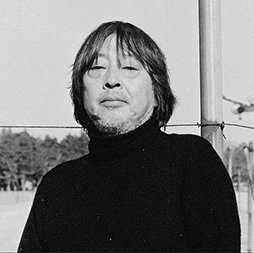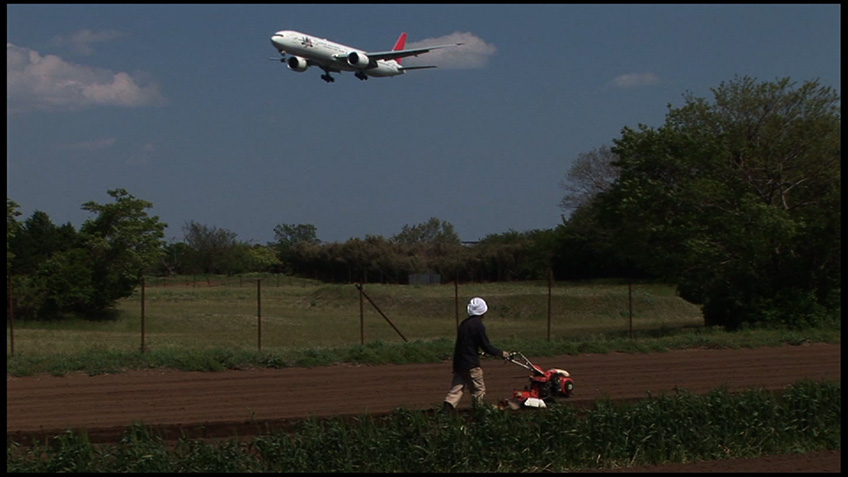산리즈카에 살다: 나리타 이야기The Wages of Resistance: Narita Stories
 트레일러 재생
트레일러 재생
다이시마 하루히코, 오츠 코시로
- Japan
- 2014
- 140min
- DCP
- color/black and white
Synopsis
1966년 나리타 공항 건설에 반대했던 산리즈카 주민들의 투쟁은 전국적인 지원 속에서 일정 정도 승리했고, 산리즈카는 격렬했던 정치적 투쟁의 상징처럼 되었다. 45년이 지난 후, 다시 찾은 산리즈카엔 몇몇의 주민만이 남아 비행기 소리 속에서 농사를 짓고 있고, 땅을 버리고 떠나야 했던 많은 이들은 눈물로 아쉬움을 이야기한다. 뜨거운 투쟁과 아름다운 전원 풍경이 공존하던 과거와 머리 위 제트 엔진소리가 쉬지 않고 들리는 현재의 모습이 대조적이다.
Review
The 7-part series by Ogawa Shinsuke dealing with the Sanrizuka struggle from the sixties to the seventies is already part of history. Otsu Koshiro, the cinematographer for Summer in Narita, the first of the series, who was arrested at one time for obstruction of justice, returned to Sanrizuka after 45 years to shoot this film which shows what is going on in Sanrizuka today that cannot yet be categorized as part of ‘history’ past.
The reason the Sanrizuka struggle cannot be a past event is that those who died fighting live on in others today. The Korean title Live in Sanrizuka is taken from the letter left by Sannomiya Humio, the leader of the youth group before he killed himself in October, 1971, in which he asked for people to keep living in Sanrizuka. One of the members of the group still lives in Sanrizuka because of this letter and continues to protest against the airport. He said that “my body became like that”, and so is the case where what makes them continue a 50-year-old fight is by ‘strong will’. Just as grandmother Oki Yone said in the declaration of war, “My body is like my body but it’s not my body”, ‘the body formed together” during the struggle continues to live quietly, breathing and resisting beyond the death of the individual.
The Sanrizuka struggle is not history from 50 years ago but a fight with 50 years of history. During those 50 years, there have been many fights and many deaths in Korea also. Events that we already consider as ‘past history’ may still be ongoing in certain places. I hope that watching this film will make us think a little differently about the way we view ‘history’.
Director
-

다이시마 하루히코Daishima Haruhiko
Regarding the Lives of Others: Tsuchimoto Noriaki and Otsu Koshiro (2010)Outsider Art in Japan (2008) In the beginning was the Word. Everything was brought out into broad daylight to be scrutinized and dissected by words and reason; to be verbalized and hung out to dry. But the world of images is a world of shadows swaying endlessly. The minute you think you caught it; it slips through your fingers. The mesh of verbalization is too big to capture this world of images in its net. It flees away.This film recounts the forty-six year struggle of the Sanrizuka farmers opposing the new airport and the government’s authoritative oppression through the sober eyes of present day farmers. The airport has been built, however imperfectly, and the farmers’ defeat is an inevitable conclusion. However, the farmers are still farming on the land while casting side glances at the planes. They continue to live there. No doubt their everyday lives and their minds are swaying conflicting courses. We quietly placed our camera at their side and captured their voices through a serenity of images.
-

오츠 코시로Otsu Koshiro
Butoh Dancer Kazuo Ohno (2005) The opening text in The Wages of Resistance states: “Very truly I tell you, unless a kernel of wheat falls to the ground and dies, it remains only a single seed. But if it dies, it produces many seeds (John 12:24).” Dostoyevsky’s The Brothers Karamazov also cites this in its epigraph. The Russian novel and The Wages of Resistance may seem to have nothing in common, but they actually share a particular perspective. Both works depict the “sorrows of life,” while weaving within them stories that are life affirming.The people of Sanrizuka, who once risked their lives to fight against the state, continued to live the “sorrows of life.” They did not cease to remind themselves what helpless imbeciles human beings are. In the meantime, contemporary Japan enjoys high economic standards and the ordinary Japanese citizen drowns in pursuit of the “joys of life.” That is exactly why the truth inherent in these stories tells us, “People can never truly live positively unless they acknowledge how forsaken they are.”
Credit
- ProducerDaishima Haruhiko
- Cinematography Otsu Koshiro
- Editor Daishima Haruhiko
- Music Otomo Yoshihide
- Sound Takizawa Osamu
Contribution / World Sales
Contribution / World Sales Fujioka asako
E-mail naritaresistance@gmail.com




